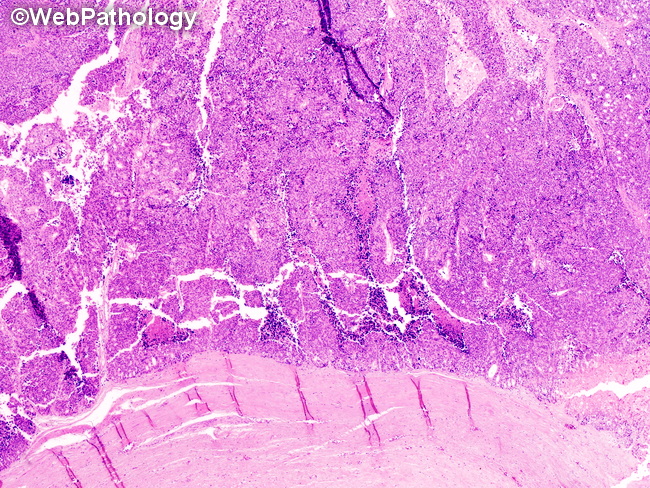Neuroendocrine Carcinomas of Gallbladder


Comments:
Introduction: Poorly-differentiated neuroendocrine carcinomas make up about 4% of all gallbladder cancers. They occur at a slightly younger age as compared to conventional adenocarcinomas. They may have small cell or large cell phenotype, similar to those in the lungs and other locations. Patients may present with abdominal pain, abdominal mass/distension, jaundice, and weight loss. The clinical presentation may include paraneoplastic syndrome (Cushing syndrome, sensory neuropathy, hyponatremia). These tumors are highly aggressive, present at an advanced stage, and have a poor prognosis. The median survival time is < 1 year. The 5-yr and 10-yr survival rates are 20% and 0% respectively. This low magnification view is from a large cell neuroendocrine carcinoma of the gallbladder.



